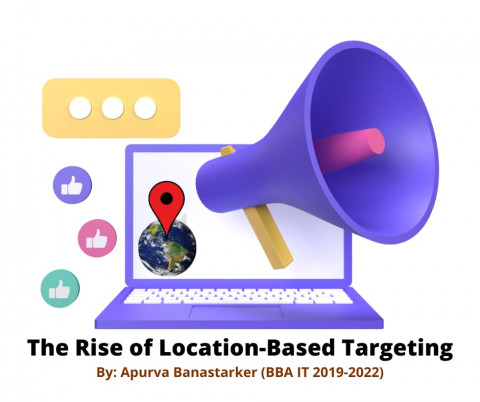
Location-based targeting is an advertising strategy that sends customized ads to people depending on their location. Where you visit is believed to be the highest indicator of the type of person you are, what you like to do, what you love to eat, where you work etc. For example, A user who is often found in a Walmart parking lot and a primary school during closing hours can be categorized as a “mom” and targeted at Walmart’s locations in campaigns aimed at increasing baby & child care products.
Consider browsing for perfumes online. You decide to go to a shopping center with a few perfume stores one day, and as you approach it, you are served an ad from one of those stores offering similar items at a discounted price. Such an ad has a high chance of generating a response from users. Alternatively, if you're just starting out as a tutor, you can place advertising in local schools. If you opened up a cafe offering cheaper meal rates, send ads to people around Starbucks or Nescafe. It is becoming increasingly important to huge firms and small businesses with physical storefronts that want to attract customers.
Marketers are ecstatic to be able to use this technology to entice customers. The restrictions of online advertising appear to be reducing as mobile technology advances and people become increasingly engaged with their phones. These technologies now allow offline establishments to be seen and recognized across all internet platforms through advertising. Furthermore, the concept of geo-contextual targeting has tapped into a plethora of competing offers that can be delivered to a competitor's customers within their own premises. This is thanks to technological advancements and the clever use of location data on a smartphone to precisely estimate people's geographical proximity within certain areas.
Location-based advertising is similar to many other advertising tactics such as audience targeting. These ads can be shown on a variety of platforms, including mobile, desktop CTV/OTT, and the web. Location-based targeting can target specific audiences rather than affecting all users in a certain place. For example, advertisers can set up a campaign to serve ads to only mothers and coffee lovers in Walmart's parking lot.
Location-based advertising is a beacon for businesses looking to invest in mobile advertising, especially if their main aim is increasing in-store traffic as opposed to other objectives like brand awareness & online sales. Location targeting is just another form of personalized advertising where the primary data for personalization is the user’s geolocation data. Personalization is expected as a standard of service, as customers think they are acknowledged as consumers when they receive personalized offers. Consumers tend to describe ads as "extremely annoying" if their offers aren't relevant.
In order to capture the user's attention, the advertisement context must be emphasized. In fact, in 2018, location-targeted mobile advertising spending in the United States amounted to 21.4 billion U.S. dollars. According to industry forecasts, this figure is set to grow in the next six years and surpass 32 billion dollars by the end of 2023.
What the data tells us
In some cases, location-based targeting can fail to elicit any type of response from a user because location can be quite subjective. According to prior research, ads received from a retail outlet while shopping at a mall are more likely to be viewed as more relevant and effective than the same advertisement received in a more private area, such as at home (Banerjee and Dholakia, 2008). However, if the user is engrossed in work, even a product of interest promoted from a few miles away may appear unimportant.
Other research states women respond favourably to advertising cues in physical stores, and their satisfaction with the shopping experience causes them to spend longer time in the store and explore more items.
According to some studies, the percentage of people who do not want to share their data and are particularly concerned about the time and place where their location data is utilized. The individuals were also far more willing to share their second and third most frequented locations than their first and most visited locations, which were most likely their homes. Additionally, other studies claim that because women are more prone to be sociable and share information with others, they are more likely to share their location information.
This could affect the changing scope of location-based advertising because of privacy concerns from users. Many individuals understand the potential advantages of location tracking features, with the rise of essential apps that require location access such as Uber, food delivery apps, weather apps, etc. They use location data to provide a more distinctive and helpful experience. Nonetheless, not everyone is comfortable with or aware of the amount of information that apps might collect.
Bibliography
-
Location‐based mobile advertisements and gender targeting | Emerald Insight
-
The Impact of Mobile Advertisement on the Students of Manipur University | Semantic Scholar
-
Geo-Conquesting: Competitive Locational Targeting of Mobile Promotions - Nathan M. Fong, Zheng Fang, Xueming Luo, 2015
-
Location-based advertising on mobile devices | SpringerLink
-
When are users comfortable sharing locations with advertisers? | Proceedings of the SIGCHI Conference on Human Factors in Computing Systems
By : Apurva Banastarker (BBA-IT 2019-2022) 



